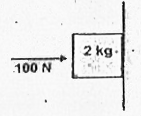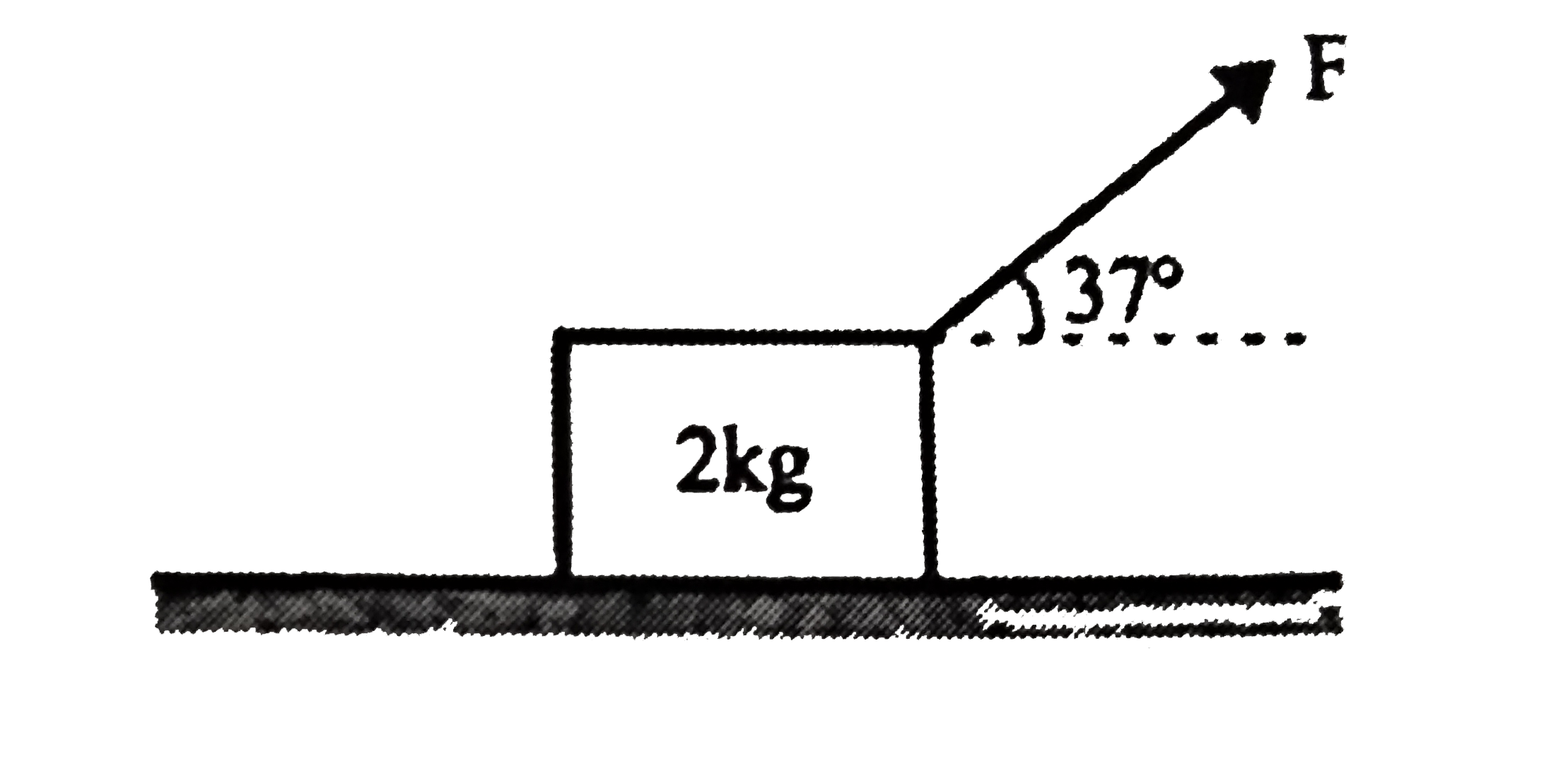A block of mass 20kg is pushed with a horizontal force of 90N. If the coefficient of static & kinetic friction are 0.4 & 0.3, the frictional force acting on the block is: (g=10ms−2)
90 N
80 N
60 N
30 N
The correct Answer is:C
To solve the problem, we need to determine the frictional force acting on a block of mass 20 kg when a horizontal force of 90 N is applied. We are given the coefficients of static and kinetic friction as 0.4 and 0.3, respectively.
Step 1: Calculate the weight of the block.
The weight (W) of the block can be calculated using the formula:
W=m×g
Where:
- m=20kg (mass of the block)
- g=10m/s2 (acceleration due to gravity)
Calculating the weight:
W=20kg×10m/s2=200N
Step 2: Determine the normal force (N).
Since the block is on a horizontal surface and there are no vertical forces acting on it apart from its weight and the normal force, the normal force (N) is equal to the weight of the block:
N=W=200N
Step 3: Calculate the maximum static friction force (f_s).
The maximum static friction force can be calculated using the formula:
fs=μs×N
Where:
- μs=0.4 (coefficient of static friction)
Calculating the maximum static friction:
fs=0.4×200N=80N
Step 4: Compare the applied force with the maximum static friction.
The applied force is 90 N, which is greater than the maximum static friction force of 80 N. This means the block will start moving, and we will now consider kinetic friction.
Step 5: Calculate the kinetic friction force (f_k).
The kinetic friction force can be calculated using the formula:
fk=μk×N
Where:
- μk=0.3 (coefficient of kinetic friction)
Calculating the kinetic friction:
fk=0.3×200N=60N
Step 6: Conclusion.
The frictional force acting on the block, once it starts moving, is the kinetic friction force:
fk=60N
Final Answer:
The frictional force acting on the block is 60 N.
The weight (W) of the block can be calculated using the formula:
W=m×g
Where:
- m=20kg (mass of the block)
- g=10m/s2 (acceleration due to gravity)
W=20kg×10m/s2=200N
Since the block is on a horizontal surface and there are no vertical forces acting on it apart from its weight and the normal force, the normal force (N) is equal to the weight of the block:
N=W=200N
The maximum static friction force can be calculated using the formula:
fs=μs×N
Where:
- μs=0.4 (coefficient of static friction)
fs=0.4×200N=80N
The applied force is 90 N, which is greater than the maximum static friction force of 80 N. This means the block will start moving, and we will now consider kinetic friction.
The kinetic friction force can be calculated using the formula:
fk=μk×N
Where:
- μk=0.3 (coefficient of kinetic friction)
fk=0.3×200N=60N
The frictional force acting on the block, once it starts moving, is the kinetic friction force:
fk=60N
The frictional force acting on the block is 60 N.
Similar Questions
A block of mass 5kg is lying on a rough horizontal surface. The coefficient of static and kinetic friction are 0.3 and 0.1 and g=10ms−2 The frictional force on the block is
View SolutionA block of mass 20kg is placed on a rough horizontal plane and a horizontal force of 12N is applied. If coefficient of friction is 0.1 the frictional force acting on it is,
View SolutionA block of mass 2 kg is on a horizontal surface. The coefficient of static & kinetic frictions are 0.6 & 0.2 The minimum horizontal force required to start the motion is applied and if it is continued, the velocity acquired by the body at the end of the 2nd second is (g=10ms2)
View SolutionA block of mass 2 kg is pressed against a rigid vertical wall by a horizontal force of 100 N. If co-efficient of static and kinetic friction are each equal to 0.3 then find the magnitude and direction of frictional force on the block.

View SolutionA block of mass 2 kg is pushed against a rough vertical wall with a force of 40N. Coefficient of static friction being 0.5. Another horizontal force of 15 N, is applied on the block in a direction parallel to the wall. Will the block move? If yes in which direction? If no, find the frictional force exerted by the wall on the block.
View SolutionA block of mass 2 kg is pushed against a rough vertical wall with a force is 40 N. Coefficient of static friction being 0.5. Another horizontal force is 15 N, is applied on the block in a direction parallel to the wall. Will the block move? If yes in which direction? If no, find the frictional force exerted by the wall on the block.
View SolutionA block of mass 1kg is pushed against a rough vertical wall with a force of 20N, coefficient of static friction being 14 Another horizontal force of 10N is applied on the block in a direction parallel to the wall. Will the block move? If yes, in which direction ? If no, find the frictional force exerted by the wall on the block. (g=10m/s2)
View SolutionA block of mass m is kept on a horizontal table. If the static friction coefficient is μ., find the frictional force acting on the block.
View SolutionA block of mass 2 kg is kept on a rough horizontal floor an pulled with a force F. If the coefficient of friction is 0.5. then the minimum force required to move the block is :-

View SolutionA force of 750 N is applied to a block of mass 102 kg to prevent it from sliding on a plane with an inclination angle 30∘ with the horizontal. If the coefficients of static friction and kinetic friction between the block and the plane are 0.4 and 0.3 respectively, then the frictional force acting on the block is
View Solution
